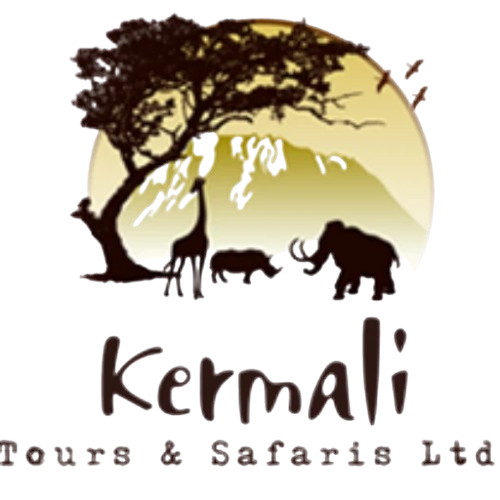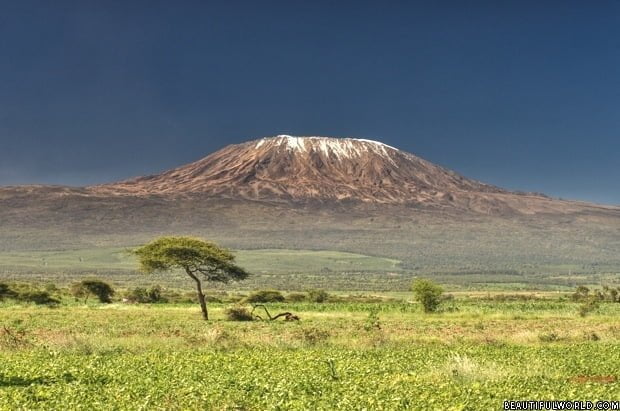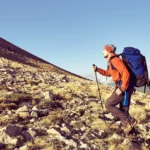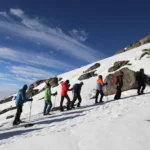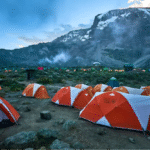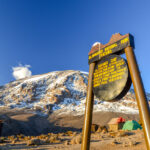Venture into a captivating journey through the diverse climatic zones of Mount Kilimanjaro with Kermali Tours & Safaris. In this guide, we explore the six distinct climatic zones that grace the slopes of Africa’s tallest mountain, each offering a unique spectacle of nature and contributing to the enchanting allure of the Kilimanjaro experience.

The Ecological Tapestry of Kilimanjaro
Mount Kilimanjaro is a natural wonder, renowned not only for its towering peaks but also for the remarkable diversity of climatic zones that grace its slopes. Kermali Tours & Safaris invites you to traverse these ecological tapestries, each unfolding a different chapter of the Kilimanjaro story.
Insider Tip
Understanding the climatic zones enhances the appreciation of Kilimanjaro’s ecological richness.

1. Cultivated Zone: The Gateway to Kilimanjaro
- Elevation: 800 to 1,800 meters
- Features: The journey begins in the cultivated zone, marked by lush vegetation, farmlands, and foothill communities. This zone serves as the gateway to Kilimanjaro, offering a glimpse of local culture and warm hospitality.

2. Rainforest Zone: Green Canopies and Biodiversity
- Elevation: 1,800 to 2,800 meters
- Features: As climbers ascend, the rainforest zone unfolds, characterized by dense vegetation, towering trees, and a symphony of bird calls. This zone is a sanctuary for biodiversity, housing numerous plant and animal species.

3. Heather-Moorland Zone: Tranquil Plateaus and Unique Flora
- Elevation: 2,800 to 4,000 meters
- Features: The heather-moorland zone introduces climbers to tranquil plateaus adorned with heather and unique flora adapted to the changing altitude. The landscape shifts, offering expansive views and a serene atmosphere.

4. Alpine Desert Zone: Otherworldly Landscapes of Barren Beauty
- Elevation: 4,000 to 5,000 meters
- Features: As the air thins, climbers enter the alpine desert zone, a surreal landscape of volcanic rocks and barren beauty. The absence of vegetation is compensated by the unique allure of the stark, otherworldly surroundings.

5. Arctic Zone: Glacial Vistas and Sublime Peaks
- Elevation: 5,000 to 5,895 meters
- Features: The Arctic zone, characterized by glaciers and perpetual ice, graces the upper reaches of Kilimanjaro. The glaciers, though diminishing, contribute to the breathtaking vistas and define the sublime peaks of Africa’s highest summit.

6. Summit Zone: The Roof of Africa – Uhuru Peak
- Elevation: 5,895 meters
- Features: The summit zone, home to Uhuru Peak, marks the culmination of the Kilimanjaro ascent. Here, climbers are rewarded with panoramic views, an unparalleled sense of accomplishment, and the realization of standing on the “Roof of Africa.”

The Journey Unfolds: Climbing Through Diversity
1. Transition and Adaptation
Insight: Kilimanjaro’s climatic zones are not only defined by altitude but also by distinct ecological features. Climbers transition through these zones, adapting to changing landscapes and conditions, creating a dynamic and immersive ascent experience.
2. Biodiversity Hotspots
Insight: Each climatic zone acts as a biodiversity hotspot, hosting a unique array of flora and fauna. The rainforest, for example, teems with life, providing climbers with glimpses of exotic plants, birds, and mammals.
3. Geological Wonders
Insight: Kilimanjaro’s climatic zones also unveil geological wonders. The volcanic landscapes of the alpine desert and the glacial formations in the Arctic zone showcase the mountain’s geological history, adding a layer of fascination to the climb.
Connect with Us
Embark on a Kilimanjaro journey that traverses diverse climatic zones. Plan your ascent with Kermali Tours & Safaris, where the enchantment of each ecological tapestry unfolds, creating a symphony of experiences on the slopes of Africa’s iconic mountain.
